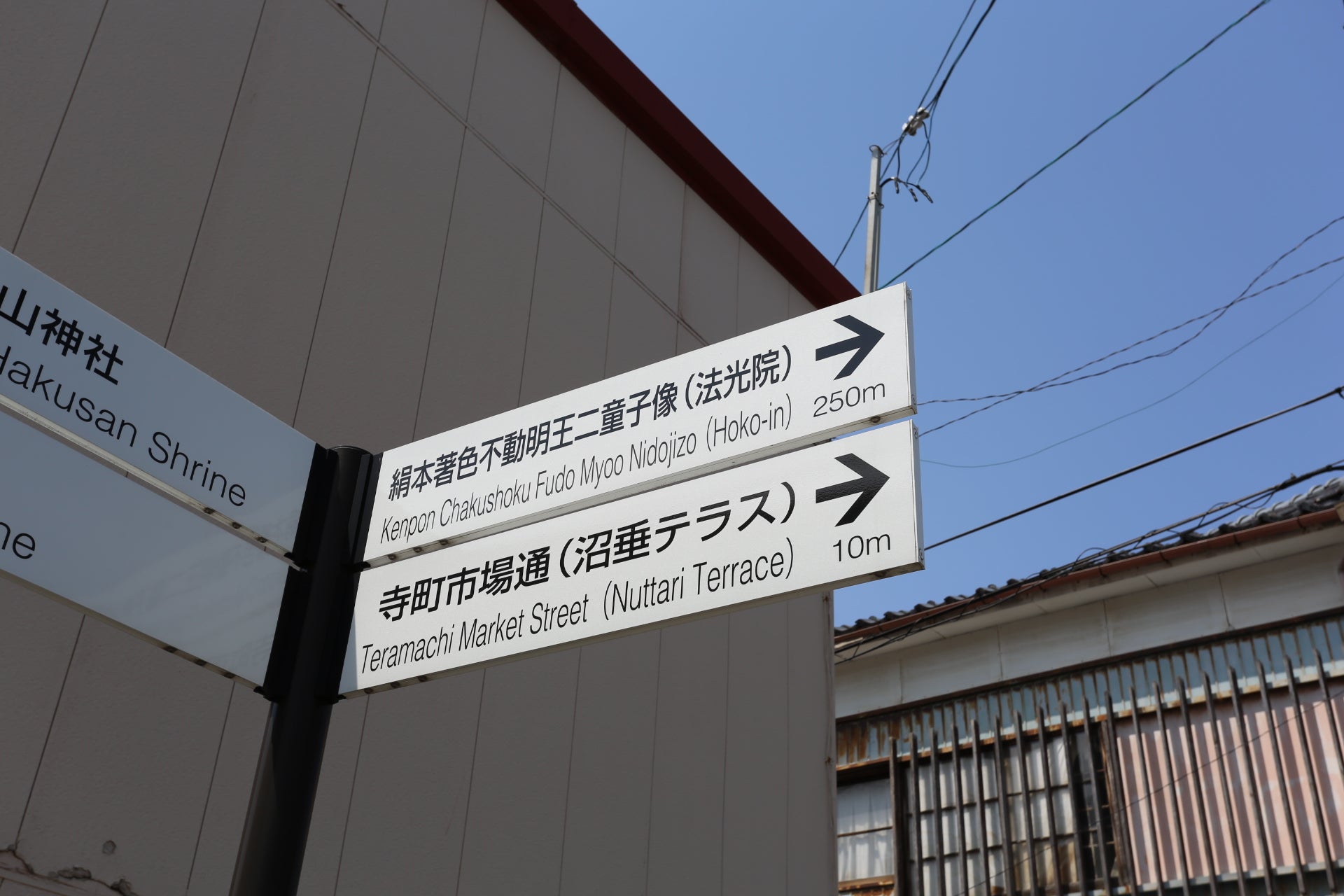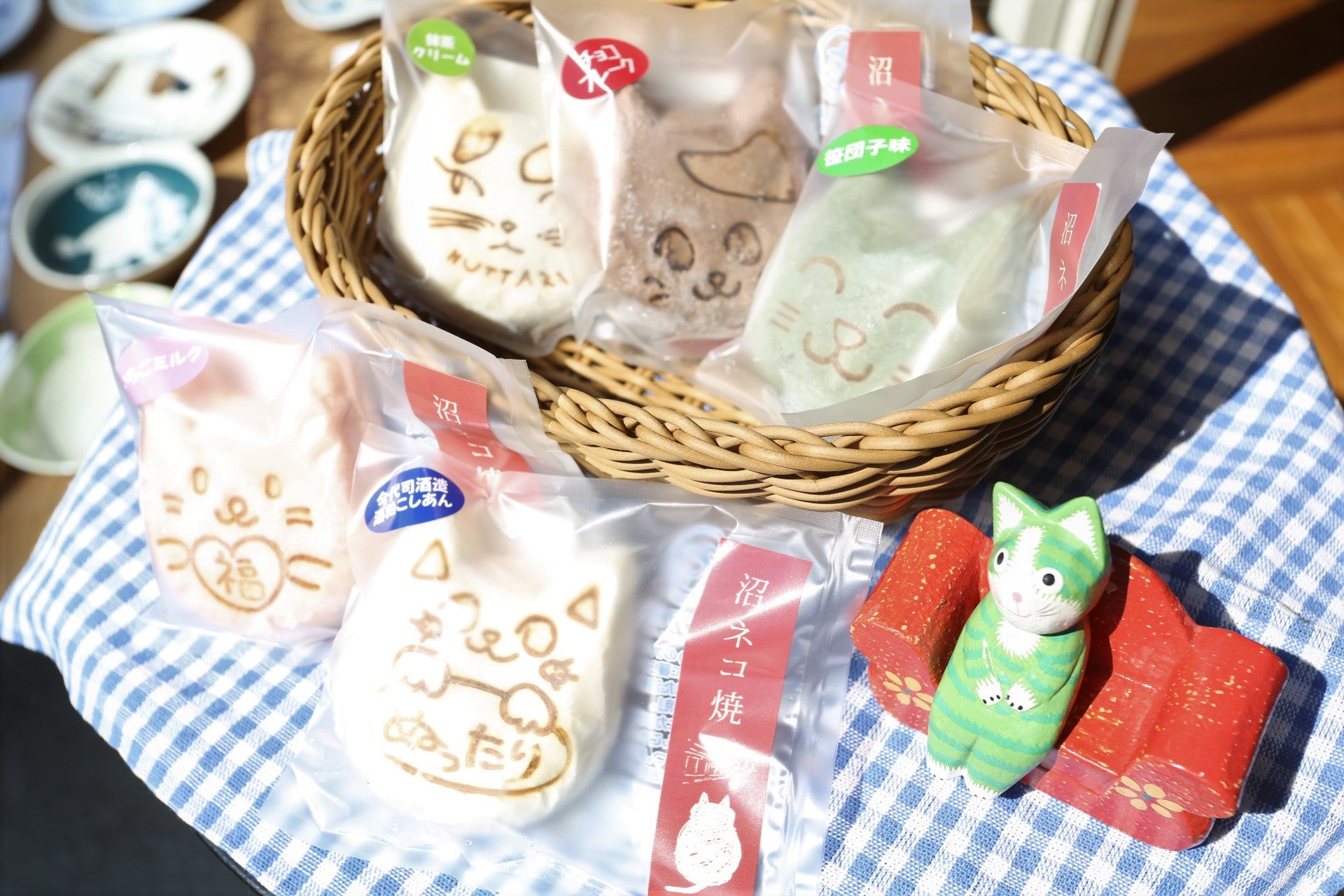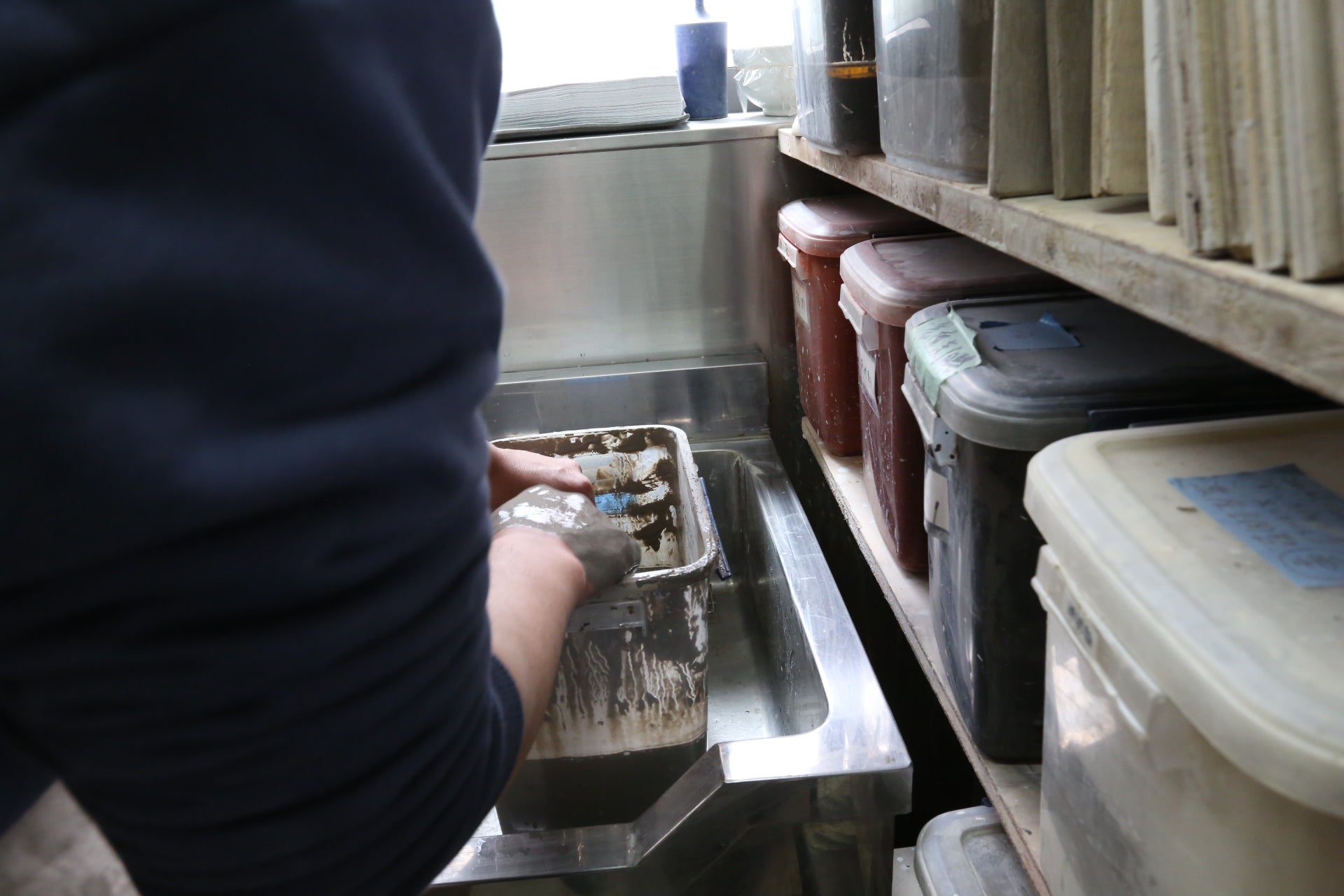This time, I went to Niigata Prefecture to visit Mr. Ikuo Oyama of Aojin Gama.
Mr. Oyama creates pottery with
particular attention to texture, using glazes made from locally grown persimmon trees and volcanic ash.
After being shown around the workshop, we took a spring walk to Fukushima Lagoon, where we could enjoy a field of rape blossoms and islands floating in the lake.
Depart from Niigata Station
Arrive at Niigata Station in the morning!
Immediately, I headed to my destination, Aojin Kiln.
You can also take a bus from here to Nuttari Terrace Shopping Street, where Aojin-gama is located.
This time I
wanted to enjoy the atmosphere of the town, so I decided to walk for about 20 minutes.

The exterior of Niigata Station was hidden during renovation.

Gradually, it will change to an old-fashioned townscape.
Feeling this kind of change in the atmosphere is one of
the joys of walking around town.

If you are coming by bus, get off here.

If you come this far, you're almost there! A little more.

We have arrived!
It's heartwarming to see a cat casually on the signboard.
If you go to the right, you will see a row of quaint and stylish shops.

Enjoy Numa Nekoyaki
Let's take a quick look before going to Aojingama.
I found a snack called "Numanekoyaki" with cute cat expressions on it at the Hitotsuboshi General Store.

The rice flour skin is made from Koshihikari rice grown in Niigata Prefecture, and is filled with red bean paste and cream.
At this time, there were 5 types: matcha cream, chocolate flakes, bamboo dumpling flavor, strawberry milk, and Tsukasa Imayoshi sake lees strained bean paste.
The facial expressions differ depending on the contents, so you can feel happy from the moment you choose.
All
of them were cute so I couldn't decide, but I chose the one closest to me, Tsukasa Imayo Sake Brewery Sake Kasu
Koshian.
Made from Niigata, including sake lees from a sake brewery in Niigata City and Koshihikari rice from Niigata
Prefecture.
It was delicious with the moist strained bean paste and the sake lees as a nice accent.
The
fabric was also chewy and made my face smile.
It's made at a side dish shop called Ruruck Kitchen in the same shopping district, so you can buy it there as well.
Let's go to Aojin Kiln
After filling your stomach, let's head to Aojingama.

The store is lined with beautiful, simple pottery, each with a different texture.

This is the owner, Ikuo Oyama. (hereinafter referred to as Mr. Oyama)

The vessels are made using a unique glaze made from Niigata's persimmon trees and volcanic ash.

The cup in the foreground is glazed with ash made from burning persimmon trees.
The tree was grown using natural farming methods at Takatsuka Farm in Akiba Ward, Niigata City.
The smooth and
flavorful texture is attractive.

The yellow-green container pictured on the far left is glazed with volcanic ash from Uonuma, Niigata Prefecture, a region known for its rice production.
As for the volcanic ash, it is said that Mr. Oyama went all the way to Uonuma to look for something he was satisfied with. (It takes two and a half hours one way by car!)
According to Mr. Oyama, volcanic ash from Uonuma accumulates in the ocean and is also used as a source of oil.
Niigata was also a land where oil was abundant in the past, so this material is closely related to that aspect as
well.
Just looking at the gentle colors will heal you.
These pots made with a unique glaze using materials from Niigata were born from Mr. Oyama's commitment.

When Mr. Oyama makes his own glazes, he continues to experiment with the materials and their mixture through trial and error.
He has also tried other materials such as le lectier (a type of pear) and peaches, looking for something that will give the appropriate softness of the ash for making the glaze.
There are differences in the types of fruits, but even fruits of the same type and trees from the same farm have different softness of ash, making it a very delicate world.
Also, after deciding on the ingredients, there is a need to adjust the quantities.
We will adjust the
appropriate ash ratio while taking advantage of the characteristics of the raw material.
Even if you add too much ash to create texture, the ash will not melt completely.
On the other hand, if there is
too little, the ash will dissolve too much and the texture of the container will be lost.
It is through these efforts that unique glazes are created.
After hearing about the glaze, we were able to
observe the process of making a single piece of pottery.

First, use a potter's wheel to spread the soil from top to bottom.
By doing this, you will remove the curls from
the soil.

Once the curls of the soil have been removed, crush the elongated soil from above and shape it into a container.

After adding the edges, the shape is complete.
Click here to see Mr. Oyama's vivid handiwork.
Slowly, the soil will settle into the shape of the pot.
Creating the shape of the container is now complete.

Next, we were shown the glazing process.

Adjust the concentration of the glaze.
Carefully use a hydrometer or check the texture with your hands.
This adjustment is especially difficult for new glazes.
The glaze is sieved to adjust the size of the ash
particles.
In particular, use a coarse sieve for items such as persimmon ash containers where you want to bring out the texture on the entire surface.

Grasp the pottery with scissors and dip it into the glaze.
By leaving the dripping glaze intact at this time, it
will create a rich texture.

After applying the glaze, it will look like this.
Then, dry and bake and you're done!
Aojin-gama's utensils are made using delicate handwork through such a detailed process.
In addition to making
pottery like this, he is also trying his hand at making pottery in the traditional anagama kiln in Mikawa, Aga Town,
Niigata Prefecture.

By firing with wood, the ash melts and becomes a glaze, creating a unique pottery.
In the future, he would like
to try making Japanese tableware that has even more texture.
Mr. Oyama's face was shining with a smile that could be seen even through his mask as he talked about utsuwa.
Spring walk from Toyosaka Station

I returned to Niigata Station from Aojingama, rode the train for about 20 minutes, and headed to Toyosaka Station.
We will take a 40-minute spring walk to Fukushima Lagoon, which is famous for its rapeseed fields.
At Fukushima Lagoon, you can see small islands floating in the lake.
The contrast with the rape blossoms is even
more beautiful, and many people come to visit.

As we walked, we found various spring flowers.

We also found small cherry blossom trees and red camellias.

Many cherry blossoms are blooming on the promenade.
It was a sunny day, so we could clearly see the mountains
that still had snow on them.

Turn left at this Yusuikan sign.
You can see it at a glance, but behind the signboard there was a plaza with
many cherry blossoms in full bloom.
I can't believe I saw such dense cherry blossoms...!

After crossing the big bridge and walking a little, you will arrive at Fukushima Lagoon!
Fukushima Lagoon, a field of rape blossoms

You can see the thatched roof.
This is a free rest area called Kataraitei, which is a recreation of an old private house.
As the name suggests, it was heartwarming to see people talking on the veranda.
You can also hear stories about Fukushima Lagoon from the past from the administrator.
As you go further inside, you will be captivated by the field of rape blossoms and snowy mountains.
I'm glad I worked hard to walk!

You could even see the cherry blossoms in the back! We enjoyed a full course of rape blossoms, lagoons, mountains, and cherry blossoms.

We are going deeper and deeper.
There are more waterfront areas, and the atmosphere of a lagoon has appeared.
Found a white heron!
You can also hear the chirping of various birds.
There are over 220 types of birds living in Fukushima Lagoon.

As we continued on, we arrived at a wild bird observation facility called Ganbaresha.
This is a facility set up by the Ministry of the Environment, and you can see the view of the lagoon from the rooftop.
There was also a telescope where you could observe wild birds in Fukushima Lagoon.

Climb the stairs to the roof.
You can see the entire lagoon and feel refreshed!
The wind was blowing and it felt nice.
It was a day when I felt the charm of pottery made from Niigata's ash, and my heart unraveled as I fully enjoyed spring.

We hope you find your favorite pottery and enjoy your everyday table scenes even more.
Here is the link to the UTSUWABI website